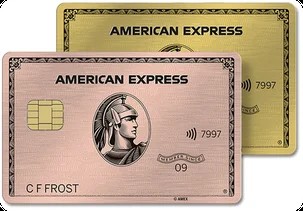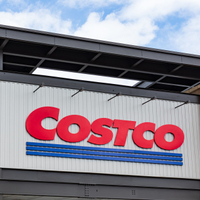How Trump’s Tariffs Could Impact Your Grocery Bill
Tariffs at the checkout: Preparing for higher grocery bills and how to manage them.

Your next trip to the grocery store may soon come with a higher price tag, as President Donald Trump's administration has implemented significant tariffs on imports from Canada, Mexico and China. Effective March 4, these measures include a 25% tariff on goods from Canada and Mexico and a 20% tariff on Chinese imports.
These tariffs could have a noticeable impact on grocery prices in the near future, particularly because Mexico and Canada are two of America's largest suppliers of fresh produce, meat and beverages. In 2023, the U.S. imported over $45 billion in agricultural products from Mexico, with nearly three quarters consisting of fruits, vegetables, beer, tequila and other beverages, according to the U.S. Department of Agriculture.
Similarly, the U.S. imported about $40.5 billion in Canadian agricultural goods, including beef, pork, grains, potatoes and canola oil. A 25% tariff on these imports could drive up costs significantly, depending on how much of the burden businesses choose to pass along to consumers.

Sign up for Kiplinger’s Free E-Newsletters
Profit and prosper with the best of expert advice on investing, taxes, retirement, personal finance and more - straight to your e-mail.
Profit and prosper with the best of expert advice - straight to your e-mail.
Beyond individual grocery bills, the broader economic implications of these tariffs, such as potential retaliatory measures from trading partners and disruptions in supply chains, could affect the availability and pricing of various products.
What food the US gets from Mexico and Canada
The United States relies heavily on Mexico and Canada for a substantial portion of its food supply, with these neighboring countries serving as key contributors to various agricultural sectors.
Mexico stands as the largest supplier of fruits and vegetables to the U.S., providing essential produce such as tomatoes, cucumbers, bell peppers, jalapeños, limes and mangos. Notably, approximately 81% of avocados consumed in the U.S. in 2024 originated from Mexico, according to USDA data. Canada also plays a pivotal role in supplying the U.S. with grains, livestock, meats and poultry.
In the beverage sector, both Mexico and Canada rank among the top four providers of alcohol to the United States. Mexico is the largest exporter of beer, with 18% of all beer consumed in America originating from Mexico, according to the Beer Institute.
However, the recent implementation of a 25% tariff on imports from Mexico and Canada by Trump's administration is poised to disrupt this equilibrium. Given that grocery retailers typically operate on thin profit margins, they may have limited capacity to absorb these increased costs, potentially passing them on to consumers.
The broader economic implications are also significant. The U.S. traditionally exports more agricultural goods than it imports; however, the value of imports has risen faster than that of exports over the past decade, according to the USDA. Factors such as climate change have increased U.S. reliance on countries like Mexico, where growing conditions are more favorable.
How soon will new tariffs impact grocery prices?

Despite the administration's assurances that these tariffs will not raise prices for consumers, industry leaders express concerns about imminent cost increases.
Target CEO Brian Cornell highlighted the company's reliance on Mexican produce during winter months, indicating that the newly imposed 25% tariffs could necessitate price hikes on fruits and vegetables as early as this week. He stated in an interview with CNBC, "Those are categories where we'll try to protect pricing, but the consumer will likely see price increases over the next couple of days."
While the exact magnitude of price changes will depend on various factors, including how much of the increased costs retailers choose to pass on to consumers, it is reasonable to anticipate that products heavily reliant on imports from Mexico and Canada will see noticeable price hikes and limited availability in some cases. Consumers should be prepared for these adjustments as the market responds to the new trade policies.
How to save on groceries amid tariffs
In light of potential increases in food prices, consumers can adopt several strategies to manage their grocery expenses effectively. Here are some practical tips to help you save on food:
Stock up on non-perishable items and buy in bulk
Purchasing non-perishable goods in bulk can lead to significant savings over time. Items such as canned goods, pasta, rice and grains have long shelf lives and are often more affordable when bought in larger quantities.
Memberships at warehouse clubs like Costco or Sam's Club can provide access to bulk purchasing options, allowing you to stock up on essentials at reduced prices.
Grow your own produce and preserve seasonal foods
Starting a home garden allows you to cultivate fresh vegetables and herbs, reducing reliance on store bought produce. Even with limited space, container gardening can yield substantial results.
Preserving seasonal fruits and vegetables through methods like dehydrating or freeze drying ensures you have access to nutritious options year-round. Utilizing equipment such as dehydrators and freeze dryers can extend the shelf life of your garden's bounty.
Stack Social is offering a Gold Star Membership + $20 Digital Shop Card for the price of a $65 Gold Star membership. It is also offering an Executive Gold Star Membership + $40 Shop Card for the price of a $130 Executive Gold Star membership.
Plan meals and be flexible with ingredients
Creating a meal plan helps in organizing your shopping list and reduces impulse purchases. Being adaptable with recipes — such as substituting unavailable or expensive ingredients — can also keep costs down.
For example, if eggs are scarce or pricey, consider using alternatives like applesauce, mashed bananas or commercial egg replacers in your baking and cooking.
Shop at value retailers and local sources
Exploring discount grocery stores can uncover deals on everyday items. These stores offer quality products at lower prices, often through cost-cutting measures like private-label brands, streamlined store layouts and bulk purchasing.
Whether it's using tips and tricks at Aldi’s no-frills shopping experience, seeing Trader Joe’s curated selection of affordable specialty items, or making use of Walmart and BJ’s bulk savings, these stores provide great deals on everyday essentials without sacrificing quality. Even wealthy shoppers have been flocking to Walmart due to the deals.
Additionally, purchasing meat and produce directly from local farms can be economical and support local agriculture. Buying meat in bulk from local sources often results in lower per-pound costs and ensures fresher products.
Maximize your credit card rewards
Leveraging your credit card's cash-back incentives can be a strategic way to offset rising costs in groceries and dining out. Many credit cards offer rewards in these spending categories, allowing you to earn back a percentage of your purchases.
To fully benefit from such rewards programs, it's crucial to pay off your balance in full each month. Otherwise, accruing interest charges can negate the advantages gained from cash-back incentives.
For example, the American Express® Gold Card offers 4 Membership Rewards® points per dollar spent at U.S. supermarkets (on up to $25,000 per calendar year in purchases, then 1X) and up to $50,000 per year then 1x at restaurants worldwide.
Additionally, new cardholders can earn 60,000 Membership Rewards® points after spending $6,000 on purchases within the first six months of card membership. It’s important to note that this card has an annual fee of $325. See rates and fees.
Below are a few cards that can help you save on food costs:
Blue Cash Preferred® Card from American Express

The Blue Cash Preferred® Card from American Express can help you save at U.S. supermarkets by offering 6% cash back on the first $6,000 charged and 1% back after exceeding this limit. Cash back is received in the form of reward dollars that can be redeemed as a statement credit or at Amazon.com checkout.
If you spend $50 per week on groceries, you could earn $156 in annual cash back, according to The Points Guy. This excludes purchases at big-box retailers like Walmart and Costco.
American Express® Gold Card

If you spend big on groceries and dining, the American Express® Gold Card offers valuable rewards. You’ll earn 4 points per dollar at U.S. supermarkets (up to $25,000 annually) and at restaurants worldwide (up to $50,000 annually). After reaching these limits, you'll earn 1 point per dollar.
These rewards can equate to up to 8% cash back based on their valuations.
Preparing for rising food costs and potential shortages
As new tariffs take effect, consumers should anticipate not only increased grocery prices but also potential shortages of certain imported goods. Implementing measures like bulk purchasing, meal planning, sourcing food locally, growing your own produce and maximizing credit card rewards can help mitigate rising costs and limited availability.
related content
Disclaimer
This article only reviews select credit cards with dining-out and grocery store rewards. We may get compensation if you visit partner links on our site. We may not cover every available offer. Our relationship with advertisers may impact how an offer is presented on our website. However, our selection of products is made independently of our relationship to advertisers. Bonus offers and rates checked as of March 5, 2025.
Get Kiplinger Today newsletter — free
Profit and prosper with the best of Kiplinger's advice on investing, taxes, retirement, personal finance and much more. Delivered daily. Enter your email in the box and click Sign Me Up.

Carla Ayers joined Kiplinger in 2024 as the E-Commerce & Personal Finance Editor. She earned a master's degree in Integrated Marketing Communications from Eastern Michigan University. Her professional background spans both commercial and residential real estate, enriching her writing with firsthand industry insights. She is passionate about making complex real estate and financial topics accessible for all readers. Dedicated to transparency and clarity, her ultimate goal is to help her audience make informed and confident decisions in their financial pursuits.
-
 Married? Five Ways to Ensure Your Estate Plans Work in Tandem
Married? Five Ways to Ensure Your Estate Plans Work in TandemGetting on the same page now means fewer potential problems when it counts.
By Kiplinger Advisor Collective
-
 12 Investments No Retiree Should Make
12 Investments No Retiree Should MakeIn retirement, when it's wise to take fewer risks with your nest egg, some investments are just nuts.
By David Rodeck
-
 Capital One and Discover’s $35.3B Merger Approved — Here’s What It Means for Your Wallet
Capital One and Discover’s $35.3B Merger Approved — Here’s What It Means for Your WalletThe Capital One Discover merger reshapes the credit card landscape and could impact your credit card rewards, interest rates and card perks.
By Paige Cerulli
-
 How to Put Together Your Personal Net Worth Statement
How to Put Together Your Personal Net Worth StatementNow that tax season is over for most of us, it's the perfect time to organize your assets and liabilities to assess your financial wellness.
By Denise McClain, JD, CPA
-
 Bouncing Back: New Tunes for Millennials Trying to Make It
Bouncing Back: New Tunes for Millennials Trying to Make ItAdele's mournful melodies kick off this generation's financial playlist, but with the right plan, Millennials can finish strong.
By Alvina Lo
-
 What Are AI Agents and What Can They Do for You?
What Are AI Agents and What Can They Do for You?AI agents promise to be the next big thing in artificial intelligence, but what exactly do they do?
By Tom Taulli
-
 Should You Buy an iPhone Now Before Tariffs Hit?
Should You Buy an iPhone Now Before Tariffs Hit?Looming tariffs can make an iPhone purchase seem urgent. Here's what to do if you need another phone but want to save money.
By Laura Gariepy
-
 Here's When a Lack of Credit Card Debt Can Cause You Problems
Here's When a Lack of Credit Card Debt Can Cause You ProblemsUsually, getting a new credit card can be difficult if you have too much card debt, but this bank customer ran into an issue because he had no debt at all.
By H. Dennis Beaver, Esq.
-
 You Can Get Netflix, Hulu and Apple TV Plus for Free at T-Mobile
You Can Get Netflix, Hulu and Apple TV Plus for Free at T-MobileT-Mobile customers save up to $35/month on streaming services thanks to this Netflix, Hulu and Apple TV Plus bundle. Here’s how to get it.
By Rachael Green
-
 Reminder: The Basics of Using HSA Funds
Reminder: The Basics of Using HSA FundsHealth savings accounts (HSAs)can help you cover out-of-pocket medical costs. Just make sure you understand the rules and keep records of qualifying expenses.
By Ella Vincent
